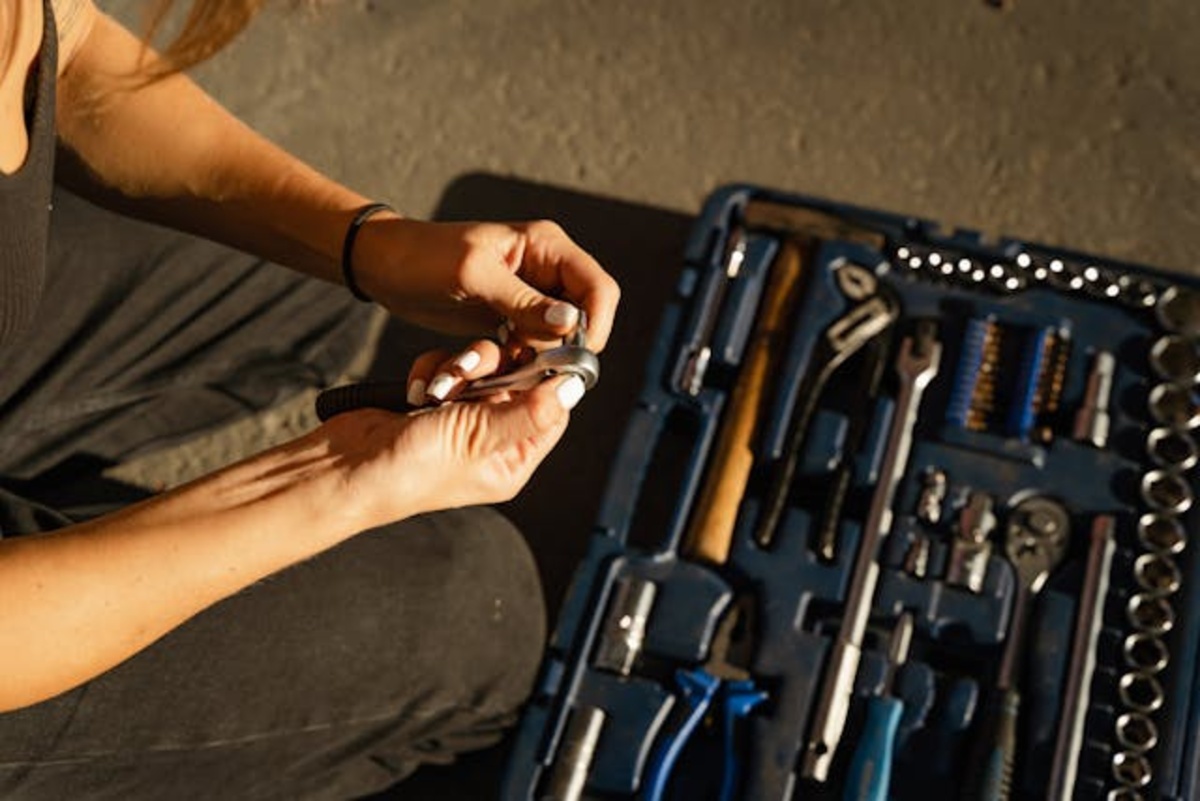Blog
How to Use a Ratchet for Efficient Mechanical Work?
A ratchet makes mechanical work faster and less tiring by allowing bolts and nuts to turn without constant repositioning. Instead of lifting the tool off the fastener after every turn, the ratchet mechanism lets the handle move back freely while keeping the socket in place. This simple design saves time, reduces strain, and makes it possible to work in tight spaces where other wrenches fail.
Anyone who works on cars, furniture, or equipment can benefit from learning proper ratchet use.
The tool adapts to different socket sizes, which means one handle can handle a wide range of tasks. With the right technique, even a beginner can tighten or loosen fasteners smoothly and avoid common mistakes like stripping bolts.
To get the most out of a ratchet, it helps to understand how the mechanism works, how to apply force correctly, and how to care for the tool. By learning these basics, a person can move from simple household fixes to more advanced mechanical projects with confidence.

Photo by Anastasia Shuraeva
Mastering Ratchet Operation for Maximum Efficiency
Efficient use of a ratchet depends on understanding how the mechanism works, choosing the right socket size, applying proper technique, and controlling torque with care. Each of these elements directly affects speed, safety, and tool life.
Understanding the Ratchet Mechanism
A ratchet works by allowing motion in one direction while locking in the other. Inside the head, a gear and pawl system creates the familiar clicking sound as the handle moves back. This design removes the need to lift and reposition the tool after each turn.
Most models include a switch that changes between tightening and loosening. A fine-tooth ratchet requires less arc to engage, which makes it useful in tight spaces. For example, a 72-tooth design needs only a 5-degree swing, while a 24-tooth design requires a wider arc.
Electric options such as a compact 3 8 battery powered ratchet add speed and reduce strain. They use a motor to drive the fastener and are especially helpful for repetitive work. However, manual ratchets remain important for precision and control.
Selecting the Correct Socket and Drive Size
The socket must match the fastener head exactly. A loose fit can round off the corners, while a socket that is too tight may not seat correctly. Metric and SAE sizes are not interchangeable, so the user should confirm the measurement before attaching.
Drive size also matters. Common drive sizes include 1/4-inch, 3/8-inch, and 1/2-inch. A 1/4-inch drive is best for small fasteners, while 1/2-inch handles higher torque applications. The 3/8-inch drive balances strength and accessibility, making it the most versatile for general mechanical work.
Adapters allow switching between drive sizes, but they can reduce strength if misused. For heavier loads, a direct match between drive and socket is safer. Choosing the correct combination improves efficiency and prevents damage to both the tool and the fastener.
Proper Technique for Tightening and Loosening
The user should always seat the socket fully onto the fastener before applying force. A partial connection can slip and cause injury or strip the fastener head. Positioning the handle for a comfortable pull helps maintain control and reduces fatigue.
Short, steady strokes are more effective than long, uneven movements. In confined spaces, using controlled arcs prevents the handle from jamming against nearby parts. For stubborn fasteners, it is better to apply gradual pressure rather than sudden force.
Switching direction should be done with the socket still on the fastener. This prevents loss of alignment and saves time. With practice, smooth transitions between tightening and loosening become second nature.
Applying and Controlling Torque Safely
Torque refers to the twisting force applied to a fastener. Too much torque can strip threads or break bolts, while too little torque may leave the connection loose. A ratchet provides leverage, but the user must judge resistance carefully to avoid damage.
For precise torque requirements, a torque wrench should replace the ratchet once the fastener is snug. This guarantees the correct specification without over-tightening. Listening to changes in the clicking sound and feeling resistance through the handle helps gauge proper force.
Safety equipment also plays a role. Gloves protect the hands, but they should not be bulky, as this reduces control. Eye protection is recommended in case a fastener snaps or debris breaks free. Proper torque control not only protects the fastener but also extends the service life of the ratchet itself.
Choosing and Maintaining the Right Ratchet for the Job
The right ratchet depends on the type of work, the space available, and the level of torque needed. Proper care also extends the life of the tool and helps it perform consistently in automotive repair, construction, plumbing, and household tasks.
Comparing Ratchet Types and Applications
Ratchets come in several drive sizes, most commonly ¼-inch, ⅜-inch, and ½-inch. A ¼-inch drive works well for small fasteners in electronics or household repairs. A ⅜-inch drive suits most automotive repair and DIY projects. A ½-inch drive handles heavy-duty jobs like suspension work or construction tasks.
Different head designs also serve specific uses. A flex-head ratchet reaches bolts in tight spaces, while a stubby ratchet fits where longer tools cannot. A long-handle ratchet provides better torque for stubborn fasteners.
To match sockets correctly, mechanics often use impact sockets with an impact wrench for high-torque jobs. Standard sockets pair with hand tools for lighter work. For added versatility, a pass-through ratchet allows bolts to extend through the socket.
Choosing the right type prevents stripped fasteners and saves time. A mismatch between drive size and application often leads to tool failure or personal injury.
Optimizing Leverage and Accessibility
Torque depends on handle length. A long-handle ratchet or a breaker bar provides more leverage to loosen rusted bolts. However, a shorter handle works better in confined engine bays or under sinks during plumbing repairs.
To improve accessibility, many ratchets include 72-tooth mechanisms. These allow movement with as little as a 5-degree swing, which helps in crowded spaces. This design benefits mechanics working around exhaust systems or anyone tackling bolts near walls or framing.
Handle design also matters. An ergonomic handle reduces hand fatigue during repetitive jobs. A steel grip offers durability but may slip in oily conditions, while a cushioned grip improves comfort in long sessions of automotive or household work.
Selecting the right balance of length, tooth count, and handle type helps complete tasks faster without damaging the fastener or the tool.
Preventing Wear and Ensuring Longevity
Proper care keeps a ratchet in service for years. Users should clean the head with a degreaser after heavy use and apply light lubrication with oil. Grease should be avoided because it attracts dirt that grinds the gears.
If the ratchet feels rough or skips teeth, disassembly and inspection of the gear and pawl may be needed. Over-torquing often causes stripped gears, so the correct drive size should always be chosen instead of forcing a smaller ratchet.
For stubborn bolts, penetrating oil helps reduce strain on the tool. Corrosion resistance also matters, so keeping the ratchet dry and stored properly prevents rust.
A well-maintained ratchet can last decades, making it one of the most dependable hand tools in any mechanic’s or DIY enthusiast’s collection.
Conclusion
A ratchet allows users to work faster and with less effort compared to a standard wrench. Its one-way mechanism saves time in tight spaces and reduces strain on the hands.
Proper socket fit, correct direction control, and steady force all lead to better results. Small adjustments in technique often make a big difference in both speed and accuracy.
Regular cleaning and light lubrication keep the tool in good condition. As a result, it continues to perform well across automotive, household, and professional tasks.
By practicing these methods, anyone can handle mechanical work more efficiently and with greater confidence.





Comments